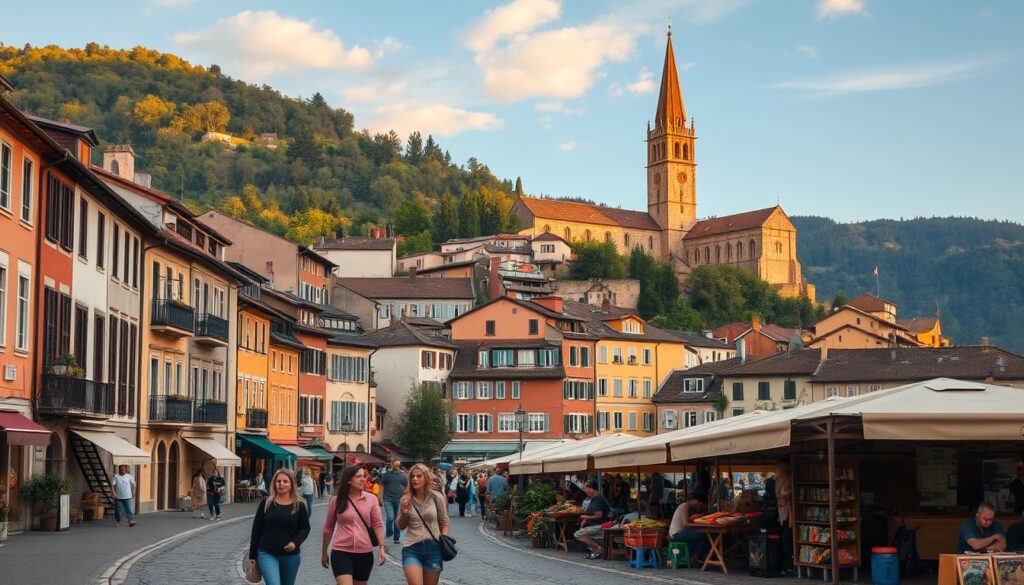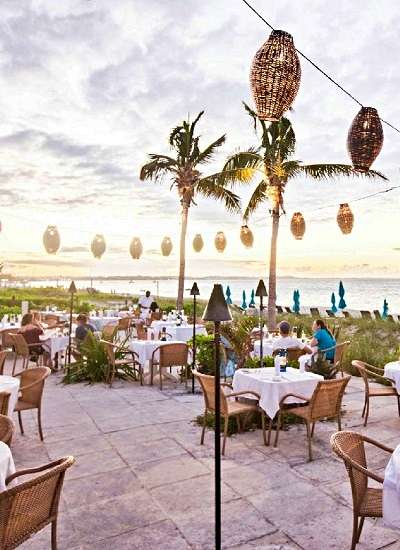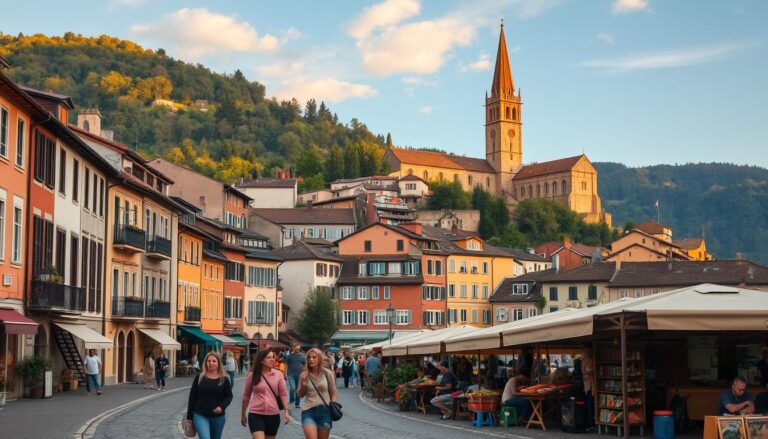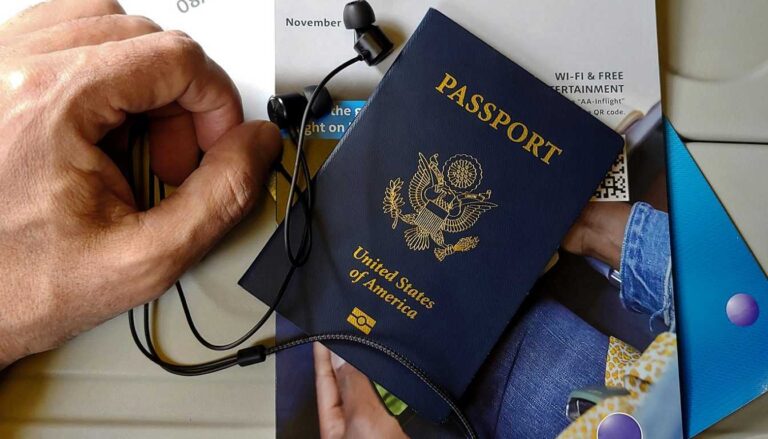Traveling through Europe doesn’t have to cost a lot. With some planning and the right attitude, you can see all Europe has to offer for just $50 a day.

Budget travel in Europe is easier than you think. There are many cheap places to stay, eat, and see. This guide is for both new and experienced travelers looking to save money.
We’ll show you how to find cheap places to go and ways to save money. You’ll learn how to make your trip to Europe both fun and affordable.
Key Takeaways
- Discover affordable destinations in Europe
- Learn cost-saving strategies for accommodations and dining
- Explore budget-friendly attractions and activities
- Understand how to plan your trip on a budget of $50 a day
- Get tips on navigating Europe on a limited budget
The Budget Traveler’s Mindset
Traveling on a budget is more than just saving money. It’s about embracing a new way of traveling. It means being open to new experiences and stepping out of your comfort zone.
Setting Realistic Expectations
Knowing what $50 can cover each day is key. This includes where you stay, what you eat, how you get around, and what you do. Balancing comfort and cost is crucial for a budget-friendly trip.
What $50 Can Realistically Cover
With $50, you can afford a budget hostel, eat at local spots, and use public transport. You might have to choose free or low-cost activities.
Balancing Comfort and Cost
Finding a balance between saving money and enjoying your trip is important. Sometimes, spending a little more on comfort can make your trip better.
Embracing the Art of Slow Travel
Slow travel is about enjoying the journey, not rushing. It lets you really experience the places you visit.
Quality Over Quantity
Choosing fewer places to visit but spending more time there can be more rewarding. It leads to a more fulfilling experience.
Building Flexibility Into Your Itinerary

Planning Your Budget European Adventure
Starting a budget European trip needs careful planning. But the fun and savings make it all worth it. First, pick places that match your budget.
Choosing Budget-Friendly Destinations
Europe has many affordable spots. Eastern European countries like Poland, Hungary, and Croatia are great for culture on a budget.
Eastern European Gems
Places like Krakow, Budapest, and Dubrovnik are cheap and full of history and culture.
Affordable Western European Cities
Cities like Porto in Portugal and Valencia in Spain mix modern and old at good prices.
Best Times to Visit for Lower Prices
When you go can really cut costs. The shoulder season is best for saving money without missing out.
Shoulder Season Benefits
The shoulder season, April-May or September-October, has nice weather and fewer crowds.
Avoiding Peak Tourist Periods
Skipping the busy months of June-August can save you money on places to stay and things to do.
Creating a Realistic Daily Budget
Setting a daily budget is key. Plan for where you’ll stay, eat, travel, and play.
Sample Budget Breakdowns
A daily budget might be $20 for a place to stay, $15 for food, $5 for getting around, and $10 for fun.
Adjusting for Different Regions

How to Travel Europe on $50 a Day: Core Strategies
To travel Europe on a budget, you need to know some key tips. One great way is to use the 60-30-10 budget rule. It helps you split your money wisely for different things.
The 60-30-10 Budget Rule
The 60-30-10 rule is simple but powerful. It says to spend 60% on needs, 30% on wants, and 10% on savings or emergencies.
Allocating Funds for Accommodation
Finding cheap places to stay is key. Look into hostels, guesthouses, or Airbnb. Spending a lot on accommodation can save you money elsewhere.
Food and Transportation Budgeting
Eating out can be expensive. Try self-catering or street food for a taste of local life. For travel, use public transport or cheap flights. Use your 30% for fun without overspending.
Tracking Expenses Effectively
Keeping track of your spending is important. Use digital tracking tools like apps or spreadsheets to stay on budget.
Digital Tracking Tools
Apps like Trail Wallet or Spendee track your spending live. They give you insights to adjust your budget if needed.
Daily Budget Check-ins
Checking your budget daily helps you save. It keeps you on track with your money goals.
Emergency Fund Considerations
An emergency fund is crucial for unexpected costs. It keeps you safe financially while traveling.
How Much to Set Aside
Save 10% of your budget for emergencies. Adjust this based on your travel plans and how risky you feel it is.
When to Use Your Emergency Fund
Use your emergency fund for sudden issues like medical problems or travel delays. Know when to use it.

With these strategies, you can manage your money well and have a great time in Europe on $50 a day.
Finding Affordable Accommodation Across Europe
Exploring Europe on a budget is easier than you think. There are many affordable places to stay, like hostels, budget hotels, homestays, and even house-sitting.
Hostels and Budget Hotels
Hostels are perfect for budget travelers. They offer dorm rooms and private rooms at low prices. Think about your budget and what you prefer when choosing between dorms and private rooms.
Dorm Rooms vs. Private Rooms
Dorm rooms are the cheapest option, great for solo travelers or those watching their spending. Private rooms give more privacy and are found in hostels and budget hotels.
Booking Strategies for Best Rates
Book early and be flexible with your travel dates to get the best deals. Look for booking sites that offer discounts for early bookings.
Homestays and Couchsurfing
Homestays and Couchsurfing offer a chance to dive into local culture. Having a trustworthy profile is key for a good experience.
Building a Trustworthy Profile
A detailed profile with a clear photo and description can help you get accepted by hosts. Share your travel stories and show you’re interested in cultural exchange.
Safety Considerations
Always check your host and read reviews from other travelers. Trust your gut, and cancel if something doesn’t feel right.
House-Sitting Opportunities
House-sitting lets you stay for free if you take care of someone’s home. But, finding real listings takes effort.
Finding Legitimate Listings
Use trusted house-sitting sites that check hosts and handle payments safely. Be careful of scams and never pay before you stay.
Responsibilities and Expectations
Know what you’ll be doing, like caring for pets or watering plants. Good communication with your host is essential for a great house-sitting experience.
| Accommodation Type | Average Cost | Benefits |
|---|---|---|
| Hostel Dorm | $15-$30 | Social atmosphere, affordable |
| Homestay | $20-$40 | Cultural immersion, home-cooked meals |
| House-Sitting | Free | Free accommodation, unique experiences |

Transportation Hacks for Budget Travelers
To explore Europe without breaking the bank, mastering budget-friendly transportation is key. Transportation costs can significantly impact your travel budget. But with the right strategies, you can navigate Europe’s vast networks affordably.
Budget Airlines and Flight Tips
Budget airlines offer an affordable way to cover long distances. It’s crucial to navigate their fee structures to avoid unexpected costs.
Navigating Extra Fees
When flying with budget airlines, be aware of extra fees for checked baggage, food, and seat selection. Packing light and opting for no-frills services can save you money.
Best Booking Windows
Booking flights during sales or using fare comparison tools can help you snag the best deals. Generally, booking at least 2-3 months in advance yields better prices.
Rail Passes vs. Individual Tickets
Europe’s rail network is extensive and convenient. Deciding between rail passes and individual tickets depends on your travel plans.
When Rail Passes Make Sense
Rail passes are ideal for those planning multiple journeys within a short period. They offer flexibility and can be cost-effective for extensive travel.
Regional Train Options
For shorter distances, regional trains are often more affordable and offer scenic routes. Researching regional options can enhance your travel experience.

Public Transportation and Walking
Once you arrive at your destination, public transportation and walking are excellent ways to explore. Many European cities are pedestrian-friendly and have efficient public transit systems.
City Transit Passes
City transit passes offer unlimited travel within a set period, often including discounts on attractions. They’re a convenient and cost-effective way to get around.
Walking-Friendly European Cities
Cities like Venice, Paris, and Barcelona are best explored on foot. Walking not only saves money but also allows you to discover hidden gems.
| City | Best Way to Explore | Average Cost |
|---|---|---|
| Paris | Walking | $0 |
| Amsterdam | Public Transit | $3-$5 per ride |
| Berlin | Public Transit | $3-$5 per ride |
Eating Well Without Breaking the Bank
Eating well in Europe doesn’t have to be expensive. With some planning and insider tips, you can enjoy great meals without spending too much.
Self-Catering Strategies
Self-catering is a smart way to save money. Buying food at local supermarkets and cooking simple meals in hostel kitchens is both affordable and healthy. Start your day with a hearty breakfast, like oatmeal with fresh fruits or scrambled eggs with toast.
Navigating European Supermarkets
European supermarkets have lots of affordable products. Look for local specialties and fresh produce to make tasty meals. For example, you can find cheeses, bread, and cold cuts for a quick lunch.
Simple Hostel Kitchen Meals
Hostel kitchens are perfect for making meals. Stick to simple dishes like pasta, salads, and omelets. These meals are budget-friendly and easy to make.
Affordable Local Eateries
When eating out, choose affordable local eateries. Lunch specials and prix fixe menus are great deals. They offer a full meal at a lower price than dinner.
Lunch Specials and Prix Fixe Menus
Many restaurants have lunch specials or prix fixe menus. These menus include a starter, main course, and dessert at a lower cost.
University Areas for Budget Dining
Areas near universities have budget-friendly dining options. Cafes and eateries popular with students offer a variety of cuisines at affordable prices.
Street Food Adventures
Street food is a great way to try local cuisine. It’s often affordable and delicious. Try local specialties like gyro in Greece or fish and chips in the UK.
Regional Specialties Worth Trying
Every region has its own specialties. Trying local street food lets you experience authentic flavors. From waffles in Belgium to gelato in Italy, there’s something for everyone.
Food Markets and Halls
Food markets and halls offer a variety of street food options. They’re perfect for sampling different foods and drinks.
Free and Low-Cost Sightseeing Opportunities
You don’t have to spend a lot to see Europe’s history and culture. There are many free and low-cost activities. Europe has famous landmarks, cultural events, and natural beauty that won’t cost you much.
Free Museum Days and City Passes
Many top museums in Europe have free days. Plan your visits for these days to save money.
Researching Free Admission Times
Look up when museums and galleries are free. Some cities also have passes for many attractions at a lower price.
When City Passes Are Worth It
City passes are good if you see many places in a short time. Compare the pass price to the cost of each attraction to see if it’s a good deal.
Self-Guided Walking Tours
Walking around cities is a great way to find hidden spots and enjoy the local vibe. You can follow free tours or make your own path.
Free Walking Tour Options
Many cities have free walking tours with expert guides. These tours are based on tips, so you pay what you think it’s worth.
Creating Your Own Routes
For a unique experience, make your own walking tour. Look up important landmarks and plan a route that interests you.
Parks and Public Spaces
Europe’s parks, squares, gardens, and views are stunning and often free to see.
Historic Squares and Gardens
- See famous squares like Prague’s Old Town Square or Rome’s Piazza Navona.
- Check out the gardens of the Palace of Versailles or the Royal Botanic Gardens in London.
Scenic Viewpoints
From Montmartre in Paris to the River Thames in London, there are many spots for amazing views.
Managing Money Abroad
Starting your European adventure? Learning to manage money abroad is key. It makes your trip better by reducing stress. You can enjoy your journey without worrying about money.
Smart Currency Exchange
Exchanging currency wisely is important. Choose the right credit or debit card to save money. Cards like Revolut or WorldFirst have better rates and lower fees than banks.
Avoiding High Exchange Fees
To dodge high fees, read your card’s terms before you go. Some cards don’t charge fees abroad, while others do.
Best Cards for International Travel
Travelers often pick Chase Sapphire Preferred and Capital One Venture.
“The right travel card can save you hundreds of dollars in fees,” says travel expert, Brian Kelly.
ATM Strategies
Planning for ATMs abroad is smart. Use partner banks and networks to save money. An ATM from your bank can be cheaper.
Partner Banks and Networks
Big banks have global networks. Check your bank’s partnerships to avoid fees.
Withdrawal Planning
Plan your ATM use. Taking out more money less often can cut fees.
Dealing with Different Currencies
Knowing the difference between euro and non-euro countries is crucial. Eurozone countries make things easier, but non-euro countries need more exchanges.
Euro vs. Non-Euro Countries
Germany and France use the euro, making things simpler. But, the UK and Switzerland have their own money, needing more exchanges.
Payment Apps and Digital Options
Apps like Apple Pay or Google Pay make transactions easier. They often have better rates and lower fees than cash.
Connecting with Locals for Authentic Experiences
Europe’s charm is not just in its landmarks but in its people too. Connecting with locals can make your trip more meaningful. You’ll learn more about the culture and way of life.
Language Exchange Meetups
Language exchange meetups are a great way to meet locals. You can practice your language skills and help others learn yours.
Finding Events Online
Meetup.com and Tandem are good places to find language exchange events. You can also join local Facebook groups or language learning forums.
Basic Phrases Worth Learning
Learning basic phrases in the local language shows respect and appreciation. Sayings like “hello,” “thank you,” and “excuse me” are very important.
Community-Based Tourism
Community-based tourism lets you engage with locals and see their life up close. These programs include homestays, local tours, and cultural activities.
Local-Led Experiences
Experiences led by locals, like cooking classes or traditional crafts, offer a deeper look into the culture. They’re often more meaningful than typical tourist spots.
Cultural Exchange Opportunities
Cultural exchange programs offer chances for real interactions with locals. These might include homestays, language exchange, or community projects.
Social Media Travel Groups
Joining social media travel groups is a good way to meet other travelers and locals. These groups share tips and organize meetups.
Finding Local Recommendations
Locals know the best places to eat, visit, and explore. Asking for tips in travel groups or on social media can reveal hidden gems.
Meeting Fellow Travelers
Connecting with other travelers can make your trip better. You can share tips, travel together, or just enjoy each other’s company.
By taking these opportunities, you can have a more authentic and memorable trip in Europe.
Avoiding Common Budget-Busting Mistakes
Traveling Europe on $50 a day needs more than just excitement. It requires finding affordable options and avoiding expensive mistakes.
Hidden Fees and Tourist Traps
Many travelers fall into the trap of hidden fees and tourist traps. Restaurant service charges can sneak up on you if you’re not careful.
Restaurant Service Charges
Always double-check your bill to avoid surprise charges. Some places add a service fee, mainly for big groups.
Tourist Menu Red Flags
Watch out for menus that seem too perfect or are right outside the door. These are often set up to catch tourists off guard.
Over-Planning vs. Flexibility
Having a plan is good, but being too strict can miss out on fun. Adding buffer days to your plan lets you explore new things.
Safety Considerations for Budget Travel
Always put safety first. Keeping your valuables safe and having the right insurance can save you from unexpected costs.
Real-Life Success Stories: Europe on $50 a Day
Many travelers have explored Europe on $50 a day and shared their stories. Their experiences can inspire and guide others planning budget-friendly trips.
Case Study: Two Weeks in Italy
One traveler spent two weeks in Italy on a tight budget. They stayed in budget-friendly places and cooked their own meals. This kept their costs low.
Daily Budget Breakdown
| Category | Daily Cost |
|---|---|
| Accommodation | $15 |
| Food | $15 |
| Transportation | $5 |
| Attractions | $10 |
| Total | $45 |
Top Money-Saving Strategies
- Staying in budget hostels
- Preparing own meals
- Using public transportation
Case Study: Month-Long Eastern European Tour
Another traveler spent a month in Eastern Europe, visiting many countries on a tight budget. This journey showed the value of being flexible and knowing the local area.
Country-by-Country Costs
| Country | Daily Average Cost |
|---|---|
| Poland | $30 |
| Czech Republic | $35 |
| Hungary | $32 |
Unexpected Savings Opportunities
Using local transport cards and taking free walking tours were key to saving money on this trip.
Lessons Learned from Budget Travelers
Budget travelers face common challenges but share valuable tips. Learning from their experiences helps others prepare for their own trips.
Common Challenges
- Language barriers
- Unforeseen expenses
Most Valuable Tips
- Be flexible with travel dates
- Research local customs and prices
Conclusion: Making Your European Dream a Reality
Traveling Europe on $50 a day is possible with the right approach. Look for affordable places to stay, travel, and eat. This way, you can enjoy a great European trip.
Remember, the real Europe is its culture, history, landscapes, and people. With good planning and flexibility, your dream can come true. Europe has something for everyone, from big cities to small towns.
Follow the tips in this guide to make your trip memorable and affordable. So, get ready, grab your passport, and start making your European dream a reality.
FAQ
What is the best time to visit Europe on a budget?
The best time to visit Europe on a budget is in the shoulder season. This is April-May and September-October. Prices are lower, and the weather is nice.
How can I find affordable accommodation in Europe?
Look for hostels, budget hotels, homestays, and Couchsurfing for affordable places. Booking early helps get the best rates.
What are some budget-friendly transportation options in Europe?
Use budget airlines, rail passes, and public transport. Walking and cycling in cities are also good options.
How can I eat well without breaking the bank in Europe?
Eat well by self-catering and shopping at local supermarkets. Try affordable local eateries, street food stalls, and food markets.
What are some free or low-cost sightseeing opportunities in Europe?
Visit free museum days and take self-guided walking tours. Explore parks, historic squares, and scenic viewpoints.
How can I manage my money effectively while traveling abroad in Europe?
Be smart about currency exchange and use the right cards. Withdraw cash from partner banks’ ATMs.
What are some common budget-busting mistakes to avoid when traveling in Europe?
Avoid hidden fees, tourist traps, and inflexible itineraries. Stay aware of these to save money.
How can I connect with locals for authentic experiences in Europe?
Join language exchange meetups, community-based tourism, and social media travel groups. This helps connect with locals.
What are some tips for staying safe while traveling on a budget in Europe?
Protect your valuables, have the right insurance, and stay aware of your surroundings. These tips help stay safe.
Can I really travel Europe on $50 a day?
Yes, traveling Europe on $50 a day is possible. Plan well, budget carefully, and use affordable options for everything.
















